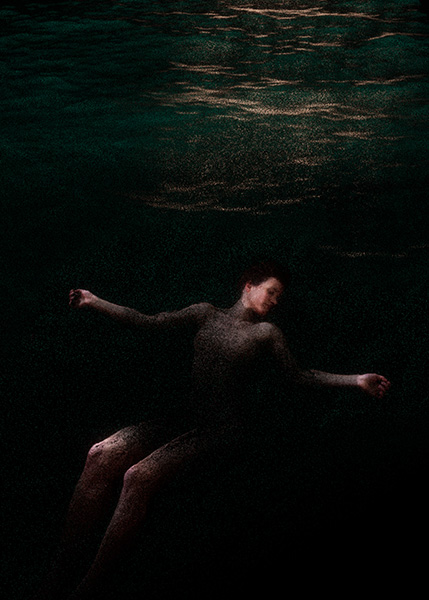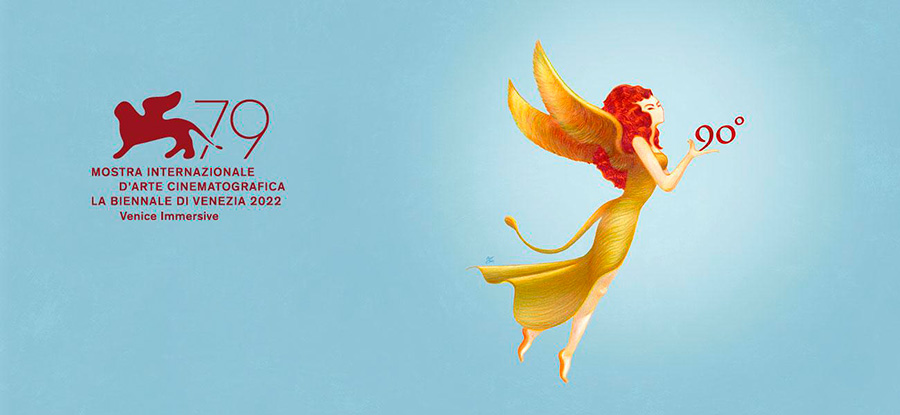
Venice Immersive
Publié par Birgit Beumers - 26 septembre 2022
Catégorie(s): Cinéma, Expositions / Festivals
Before the pandemic, Venice boasted of a fine competition of VR projects, which was presented on the island of Lazzaretto Vecchio off the Lido. This year, the event returned to the island and the programme is now called “Venice Immersive”. It presented 30 projects in different VR formats, stand-up experiences, VR chat and experimental projects in competition, plus a selection of out-of-competition projects and works developed by the Biennale College.
My selection discussed here focuses on the artistic experiences rather than the VR Chats (such as Kevin Mack’s Namuanki and Rick Treweek’s Uncanny Alley) or game developments (such as Peaky Blinders: The King’s Ransom by Russell Harding and Tim Jones).
Just Watching…
Some VR experiences place the viewer into a chair and offer a visual/virtual journey into another world. Let’s start with the fairy-tale world of Julie Cavaliere in her project Reimagined Volume I: Nyssa, a simple story of good and evil. Nyssa, a “bad” girl, who does not listen to her mum, runs off into the dark world. She passes the three tests of the fairy-tale hero/ine and saves a frog, a blue bat, and finally her broom… Adapted, or loosely connected to, Grimm’s tale of boy who knows no fear, this is a beautiful experience in Nyssa’s universe.
Two projects invite the viewer on a more unpleasant journey: Victoria Bousis presented Tu vivras, mon fils, which is based on the memoirs of Pin Yathay. The viewer assumes the role (hands included, for some interaction) of an old man, a survivor of the Red Khmer’s genocide in Cambodia, who is in search of his missing son: now we resume the search. This is a very tense, often dizzying journey, which highlights the need to remember and the impossibility to forget such loss. In Melanie Courtinat’s All Unsaved Progress will be Lost the journey takes us to a ghost town, whence all people (and animals) have been forcibly evacuated and hardly anybody is left. From the beauty of the world that is lost we move to a space lacking any greens, experiencing maybe the damage done to the world today. But actually, this project is inspired by the works of Nobel-prize winning writer an journalist Svetlana Alexievich, specifically her writings about the nuclear accident in Chernobyl in 1986.
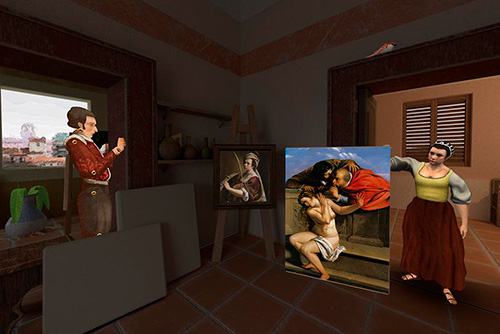
Shown in the “Best of…” section was Quentin Darras and Gaelle Mourre’s (Hi)story of a Painting: The Light in the Shadow, a project about the Italian painter Artemisia Gentileschi. This is a fine experience for schoolchildren, but maybe a little too simplistic for the adult viewer. After all, it is not as if Germaine Greer had not put her and women painters on the map with her 1979 publication of The Obstacle Race: The Fortunes of Women Painters and Their Work. Moreover, the story narrated here is somewhat banal: Artemisia looks like Snow White, a pretty girl instead of a woman who suffered at the hands of the men during her life. The film suggests that the violence experienced in life led her to create a more naturalistic depiction in her paintings, especially “Judith Slaying Holofernes”.
Just watching, and without a headset, is the experience offered by Matthew Shaw and William Trossel in Framerate: Pulse of the Earth: this is an installation consisting of large LED screens in a room, positioned on the ground and at the ceiling as well as opposite and back-to-back, on which time-lapse images are shown, in black-and-white, of different objects; they are filmed from slightly different positions and show industrial sites, nature, a garden, or an urban centre. The world surrounds the viewer, who can meander in the space and take in the immediate past or future moment in the time-lapse focused on a given site. In these sequences, “noises” can occur in the form of a bee interfering, a gardener leaving his wheelbarrow, and other “disturbances”.
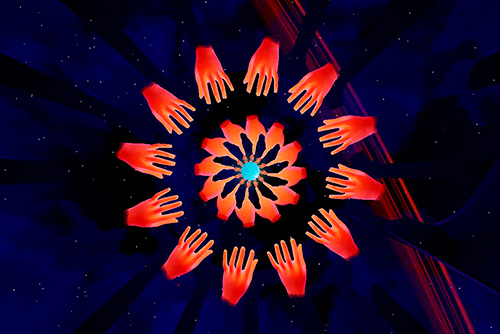
Playing Games
Two curious projects allowed the visitor to play a simple, but very effective game: Sjoerd van Acker’s Elele, a project developed in the Biennale College, is played by two participants in different spaces. Their hands interact, forming circles of movement that merge and separate, overlap and “dance” with each other, both in synchrony and asynchrony. An elegant experience. Alex Rühl’s Rock Paper Scissors is a short story of a single mum with her teenage daughter; when making decisions about what the daughter is allowed to do or which chores she has to complete, they decide together by the simple game of rock–paper–scissors, and it is the player here who participates in the decision-making. Even if this lack of strategy for a teenager’s upbringing is somewhat questionable, it is a nice idea and a creatively conceived space of their flat.
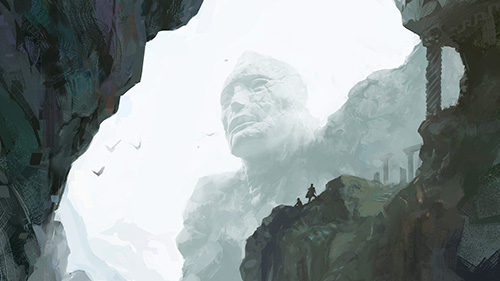
Other Worlds
The French animator, designer and VR director Jonathan Astruc had, in 2017, presented the four-player immersive experience Eclipse, in which he had created a world of interconnected space stations. In his new project, Ascenders, he explores the world after death, or rather the journey there, which depends on four players passing several tests. It is another fully immersive experience enhanced by physical effects whilst allowing freedom of movement. The players must negotiate their way along a path up a mountain, and they are guided by stone titans. They must save their souls from the huge wave that rises around the world of the experience, otherwise they would be submerged and swept away. Well, in my experience we didn’t make it… Also impressive was Mathias Chelebourg’s Rencontre(s), an interactive and multi-sensory project that features the voice of Marion Cotillard as Coco Chanel, Chelebourg puts the participants into the shoes of the perfumer Ernest Beaux in order to retrace the creation of Chanel No. 5 in 1921. Even if one might have wished to sniff out the four scents that Chanel rejected before choosing No.5, this is a rich theatrical experience for a single participant.
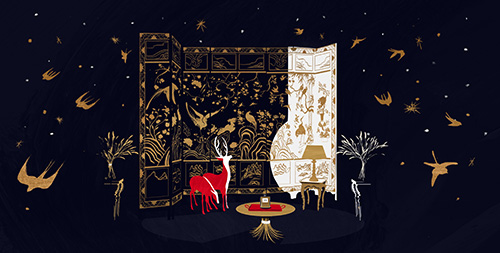
In 2019 Celine Tricart had presented in Venice VR her project The Key, in which the participants travelled with a migrant girl who fled her country, and experienced with her the loss of and longing for her home, symbolised by said key. Tricart is back in 2022 with Fight Back, a stand-up experience designed to strengthen the participants’ wish to fight back against evil; it is targeted specifically at women and their role in history. The game takes the player on a journey where they are invited to physically fight the dark monsters threatening the beautiful stars who represent, as we learn at the end, extraordinary women: they encourage the participant to protect them (and themselves) with simple movements of the arms in defence of the evil shadows. The division of the world in good and bad may be a little simplistic, but it is a fine way of showing how the women’s resistance has led somewhere. The examples of those extraordinary women include the revolutionary of the Indian independence movement, commonly called “Captain Lakshmi”; the military leader Telesilla of Argos; NG Mui, founder of Wing Chun; the suffragette Edith Garraud; and the so-called karate granny, Florence.
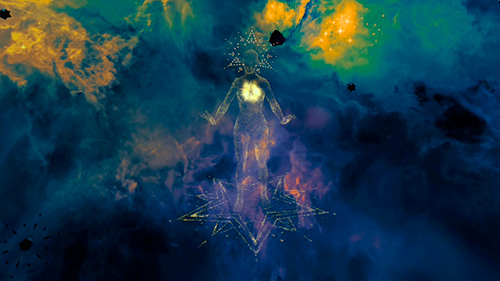
Finally, here is my favourite project: Celine Daemen’s Eurydice, a Descent into Infinity, designed in an enclosed space where the ground is covered with volcanic rubble, making it quite uncomfortable to walk, especially when you take off your shoes (as advised). Inspired by the myth of Orpheus following Eurydice into the underworld, lured by her chant, is a visually beautifully designed descent into a shining and glimmering underworld (even though, of course, we continue moving on flat ground) after a female figure has risen from the dark and guided us into the entrance of a maze. The journey is accompanied by music composed specially for the project by Kate Moore, highly regarded for her electroacoustic music. At the journey’s end, Eurydice leads us back out of the maze and on to the world.
